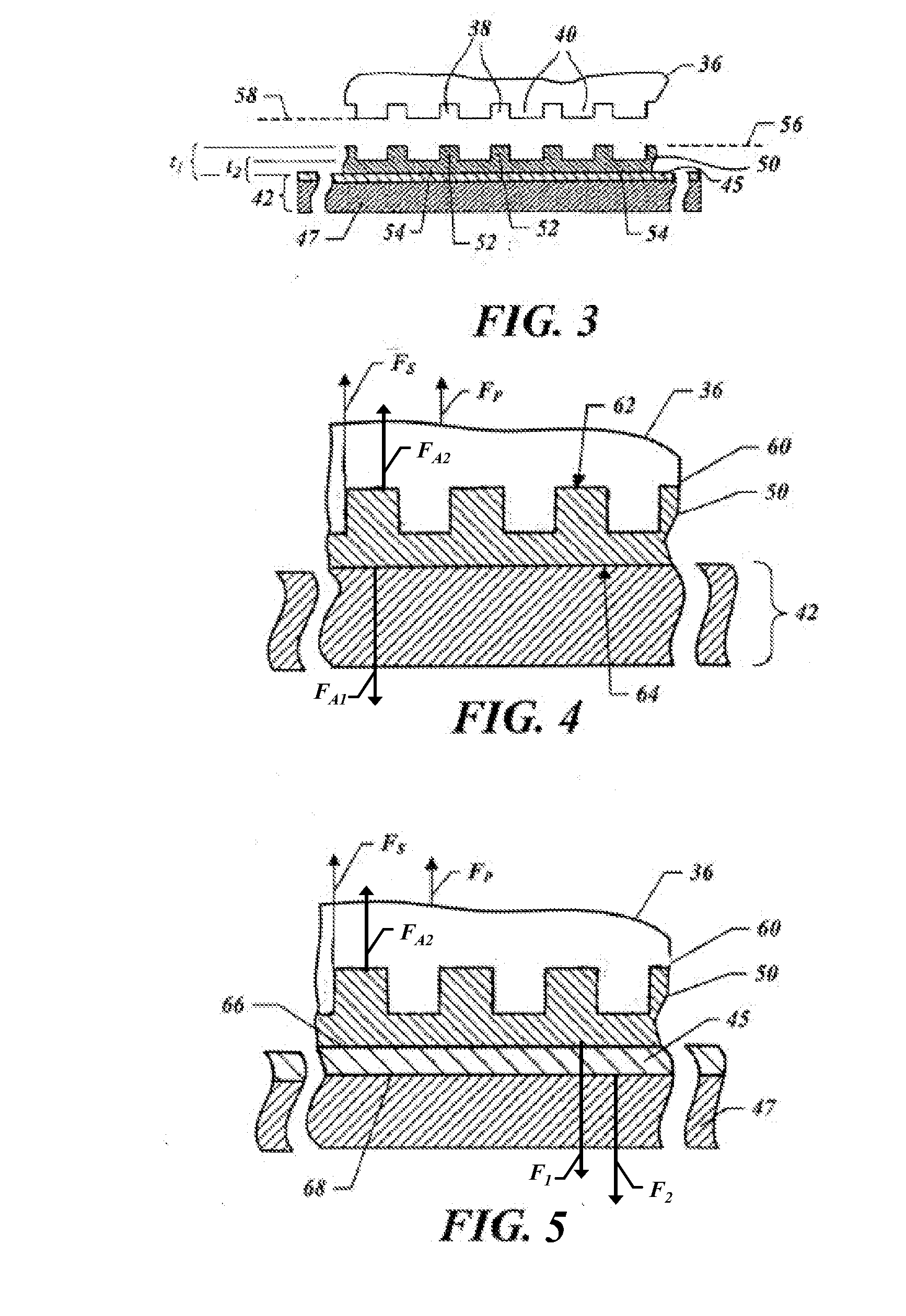Methods and Compositions for Providing Preferential Adhesion and Release of Adjacent Surfaces
a technology of adjacent surfaces and compositions, applied in the field of nanofabrication of structures, can solve the problems of inability to achieve good nano-imprint lithography features, disadvantageous multiple release of mold layers, and easy distortion, and achieve the effect of enhancing the release properties
- Summary
- Abstract
- Description
- Claims
- Application Information
AI Technical Summary
Benefits of technology
Problems solved by technology
Method used
Image
Examples
example 1
[0041]In this Example 1, the following five compositions (A-E) were made:
Componentspart by weightComposition Aisobornyl acrylate56aliphatic urethane acrylate211,6-hexanediol diacrylate202-hydroxy-2-methyl-1-phenyl-propan-1-one3Composition Bisobornyl acrylate56aliphatic urethane acrylate211,6-hexanediol diacrylate202-hydroxy-2-methyl-1-phenyl-propan-1-one3Zonyl FSO-1000.5Composition Cisobornyl acrylate55aliphatic urethane acrylate211,6-hexanediol diacrylate201H,1H-perfluoro-n-decyl acrylate12-hydroxy-2-methyl-1-phenyl-propan-1-one3Zonyl FSO-1000.5Composition Disobornyl acrylate47n-hexyl acrylate25ethylene glycol diacrylate252-hydroxy-2-methyl-1-phenyl-propan-1-one3Composition Eisobornyl acrylate47n-hexyl acrylate25ethylene glycol diacrylate252-hydroxy-2-methyl-1-phenyl-propan-1-one3Masurf FS-20000.5
[0042]Compositions B, C, and E employ fluorinated surfactants, while Compositions A and D do not. Such fluorinated surfactants were added (as release agents) to these compositions to reduc...
examples 2-7
[0047]In Examples 2-7, the Compositions A-E were tested to determine imprinting performance under different conditions.
[0048]To determine the preferential release and adhesion characteristics, each of Compositions A-E was employed to form a imprinting material layer between two glass slides. Specifically, a formation was deposited upon primer layer 45 for a relevant composition (one of Compositions A-E) that both formation 50 and primer layer 45 were solidified between two glass slides (not shown). Each glass slide was approximately 1 mm thick, 75×25 mm in the lateral dimension.
[0049]Before deposition of imprinting material layer the glass slides were cleaned. Specifically each glass slide was exposed to Piranha solution (H2SO4: H2O2=2.5:1 by volume). The glass slides were subsequently rinsed with de-ionized water, sprayed with isopropyl alcohol, and exposed to a stream of fluid for drying, e.g., a stream of nitrogen gas. Thereafter, the glass slides were baked at 120° C. (Celsius) ...
PUM
| Property | Measurement | Unit |
|---|---|---|
| tensile strength | aaaaa | aaaaa |
| weight percent | aaaaa | aaaaa |
| weight percent | aaaaa | aaaaa |
Abstract
Description
Claims
Application Information
 Login to View More
Login to View More - R&D
- Intellectual Property
- Life Sciences
- Materials
- Tech Scout
- Unparalleled Data Quality
- Higher Quality Content
- 60% Fewer Hallucinations
Browse by: Latest US Patents, China's latest patents, Technical Efficacy Thesaurus, Application Domain, Technology Topic, Popular Technical Reports.
© 2025 PatSnap. All rights reserved.Legal|Privacy policy|Modern Slavery Act Transparency Statement|Sitemap|About US| Contact US: help@patsnap.com



